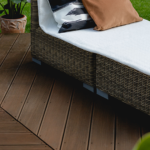
Cementitious waterproofing is one of the most widely used methods for protecting structures against water infiltration. It is commonly applied in areas that are prone to water exposure, such as basements, water tanks, bridges, and tunnels. This guide provides a detailed explanation of how to apply cementitious waterproofing effectively, ensuring long-lasting protection against moisture-related damage.
Understanding Cementitious Waterproofing
Cementitious Concrete Floor Coatings are a type of coating that consists of a cement-based mixture combined with waterproofing additives. Once applied, it creates a solid, durable barrier that prevents water penetration. It is ideal for applications where flexibility is not a primary concern but high durability and adhesion are essential.
Benefits of Cementitious Waterproofing
Easy Application: Can be applied using a brush, roller, or spray equipment.
Strong Adhesion: Bonds well with concrete and masonry surfaces.
Durability: Resistant to chemicals, moisture, and environmental elements.
Cost-Effective: A relatively inexpensive solution compared to other waterproofing methods.
Non-Toxic: Suitable for potable water tanks and food storage areas.
Step-by-Step Guide to Applying Cementitious Waterproofing
1. Surface Preparation
Before applying cementitious waterproofing, the surface must be properly prepared to ensure maximum adhesion and effectiveness.
Clean the Surface: Remove dust, dirt, oil, and loose particles using a wire brush or high-pressure water jet.
Repair Cracks and Voids: Fill cracks and holes with a suitable mortar or patching compound.
Dampen the Surface: Lightly wet the concrete surface before application to prevent excessive absorption and to ensure better bonding.
2. Mixing the Waterproofing Material
Cementitious waterproofing products come in powder or liquid form, requiring proper mixing for optimal performance.
Follow Manufacturer’s Instructions: Use the recommended water-to-material ratio.
Use a Mechanical Mixer: Mix the components thoroughly to achieve a smooth, lump-free consistency.
Allow Proper Settling: Let the mixture rest for a few minutes before application to activate the waterproofing agents.
3. Application of the First Coat
Applying the first coat properly is crucial for effective waterproofing.
Use a Stiff Brush or Roller: Apply a uniform layer of the mixture onto the dampened surface.
Ensure Even Coverage: Pay extra attention to joints, corners, and protrusions where water leakage is most likely.
Work in One Direction: Apply strokes in a single direction to maintain consistency and coverage.
4. Curing and Drying
Proper curing ensures that the waterproofing layer attains maximum strength and effectiveness.
Allow the First Coat to Set: Let it dry for at least 4 to 6 hours before applying a second coat.
Keep the Surface Moist: Lightly mist with water if the environment is too dry or hot to prevent cracking.
Avoid Disturbing the Coating: Protect the area from direct sunlight, strong winds, and heavy traffic during curing.
5. Application of the Second Coat
A second coat enhances the effectiveness of cementitious waterproofing.
Apply in a Perpendicular Direction: If the first coat was applied vertically, apply the second coat horizontally to ensure full coverage.
Use the Same Application Method: Maintain the same consistency and thickness as the first coat.
Let it Dry Completely: Allow the second coat to dry for at least 24 to 48 hours before exposing the surface to water.
6. Final Inspection and Maintenance
After the application, inspect the surface to ensure proper adhesion and coverage.
Check for Uneven Areas: Touch up any missed spots or thin sections.
Perform a Water Test: Lightly spray water on the surface to check for penetration.
Regular Maintenance: Periodically inspect the waterproofed area for cracks or wear and apply touch-ups as needed.
Best Practices for Cementitious Waterproofing
Use Quality Materials
Selecting high-quality cementitious waterproofing products ensures long-term durability and performance.
Work Under Suitable Weather Conditions
Avoid applying the waterproofing mixture in extreme weather conditions, such as high humidity, heavy rain, or intense heat, as these can affect adhesion and drying times.
Apply in Multiple Thin Coats
Applying multiple thin coats rather than a single thick layer improves bonding strength and prevents cracking.
Pay Attention to Details
Waterproofing failures often occur at joints, corners, and pipe penetrations. Reinforce these areas with additional layers or fiber mesh for added protection.
Maintain Safety Precautions
Wear appropriate safety gear, including gloves, goggles, and masks, to protect against dust and chemical exposure.
Common Mistakes to Avoid
Skipping Surface Preparation
Failure to clean and prepare the surface properly can result in poor adhesion and reduced effectiveness.
Incorrect Mixing Ratio
Using too much or too little water can compromise the waterproofing properties of the mixture.
Inadequate Curing Time
Rushing the drying process can weaken the waterproofing layer and lead to cracks.
Ignoring Structural Defects
Applying waterproofing over existing structural defects without repairing them first will not solve underlying problems.
Conclusion
Cementitious waterproofing is a reliable and cost-effective solution for protecting concrete structures from water damage. By following the proper application steps—surface preparation, correct mixing, systematic application, and adequate curing—you can achieve long-lasting and effective waterproofing results. Regular maintenance and inspection further ensure that the waterproofed surface remains in optimal condition for years to come.









